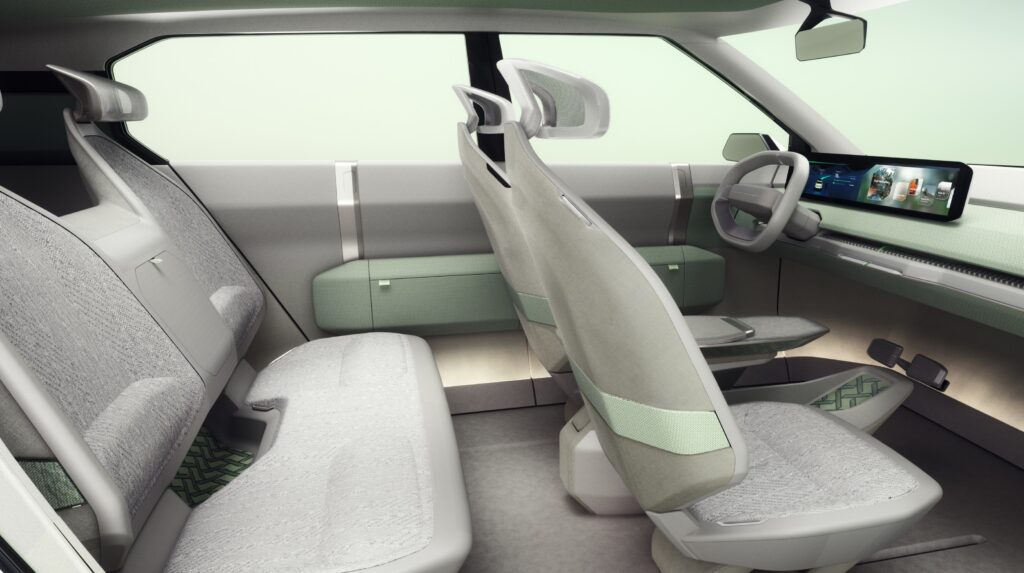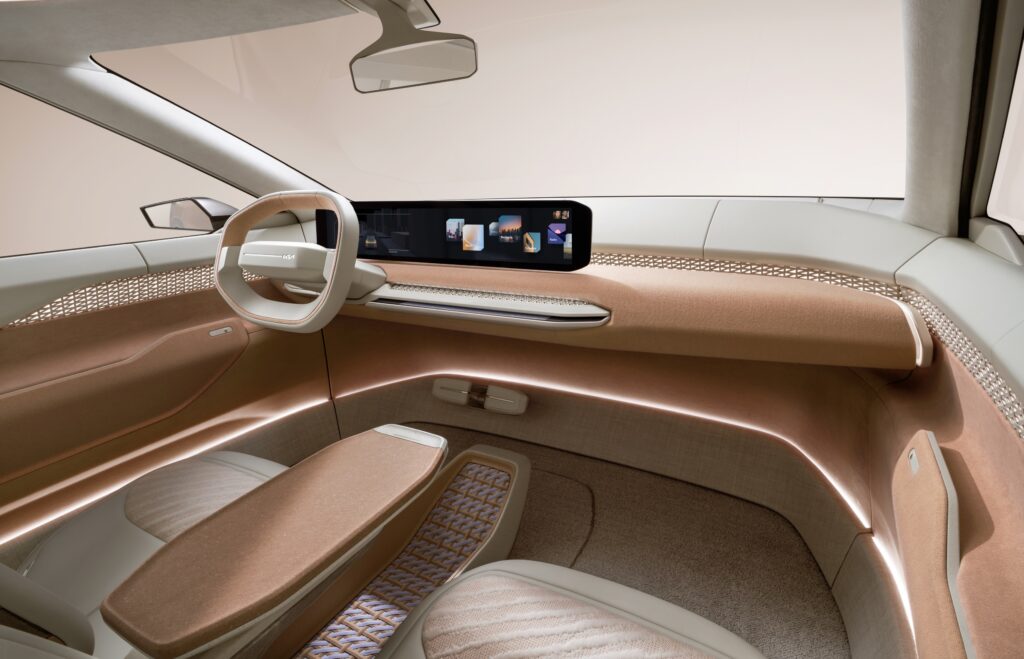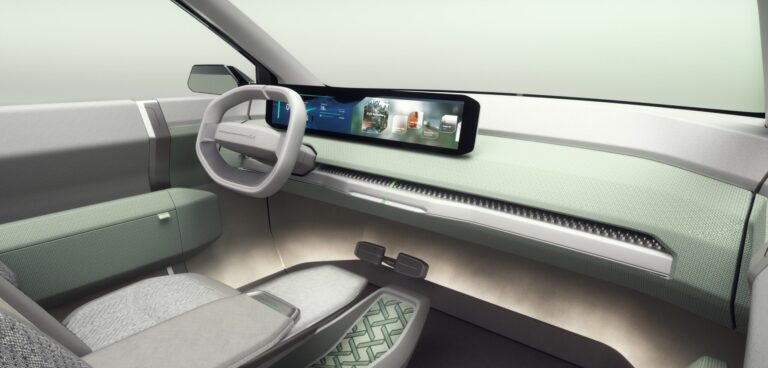Kia is continuing to expand its range of electric vehicles (EV) and, at its first Kia EV Day, it revealed two new concepts cars, the EV3 and EV4 as well as a new production model, the EV5. Key to the new concepts are interiors that feature eco-friendly materials and methodologies, which the South Korean auto maker says will play an essential role in its transition to a sustainable mobility solutions provider.
The company’s color, materials and finish (CMF) team say they took inspiration from the element of air for the EV3 (top and below), with optimum use of light and transparency throughout the cabin. They have also used natural fiber structures to deliver a lightweight, slimmer seat design with the seats constructed using 3D Knit technology; this process results in a 3D effect with a soft surface but it is also more efficient with reduced stitching and joins, plus zero waste material.
There’s even more sustainability in the EV3’s console table, which the company says was not manufactured, but grown. “Mycelium, which comes from mushroom roots, combines excellent strength with an extremely soft surface,” said Marília Biill, head of CMF design at Kia. “Developing grown materials, a process referred to as bio fabrication, is a major goal for Kia.”
 “Using Mycelium enables us to mimic the processes we see in nature and leverage it to design more sustainable solutions as the material can be grown in any shape you want using a mold. The use of Mycelium is still at a very early stage and as part of Kia’s Sustainability Strategy, we are working with partners to accelerate development of the material. One day, by growing our own materials, we’ll be able to simplify processes, adapt forms and most importantly, be closer to nature in its essence.”
“Using Mycelium enables us to mimic the processes we see in nature and leverage it to design more sustainable solutions as the material can be grown in any shape you want using a mold. The use of Mycelium is still at a very early stage and as part of Kia’s Sustainability Strategy, we are working with partners to accelerate development of the material. One day, by growing our own materials, we’ll be able to simplify processes, adapt forms and most importantly, be closer to nature in its essence.”
While nature is evident in the materials for the EV3, for the EV4 (below) the team says they were inspired by the element of earth. In various areas of the interior they applied natural dyes to 100% recycled cotton, used madder roots and walnut shells and also made use of the 3D Knit finish. In addition, the EV4 features fabric stripes on the dashboard that have been woven and applied by hand. The team also used hemp in various areas in order to elevate the aesthetics.
 “Hemp is a rapidly growing plant that requires minimal resources to cultivate,” explained Biill. “Not only is it highly sustainable, but it’s also highly moldable too, which means it is a very versatile material to work with, plus it enhances the EV concept’s cabin with its beautiful rich color.”
“Hemp is a rapidly growing plant that requires minimal resources to cultivate,” explained Biill. “Not only is it highly sustainable, but it’s also highly moldable too, which means it is a very versatile material to work with, plus it enhances the EV concept’s cabin with its beautiful rich color.”
Sustainable materials have been a focus for Kia for many years, going back to the bioplastic and sugar cane bio-fiber used in the Soul EV in 2014. Earlier in 2023 the company announced 10 must-have sustainable items for all its new model lines. These include bioplastic, bio polyurethane, and materials made from recycled PET and fishing nets.



